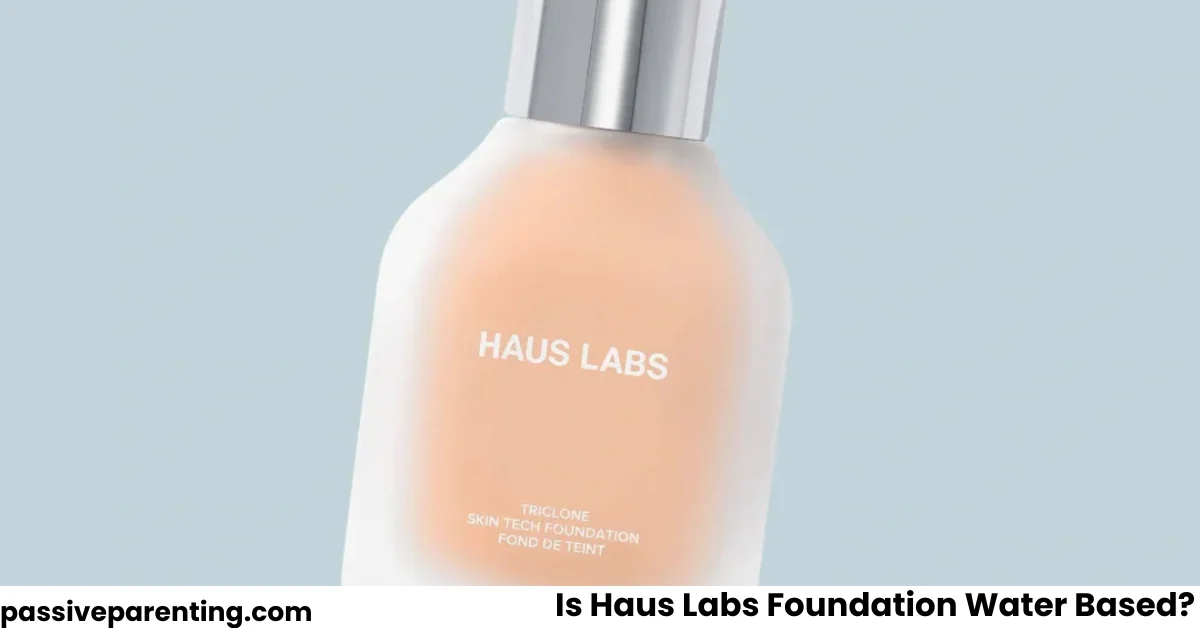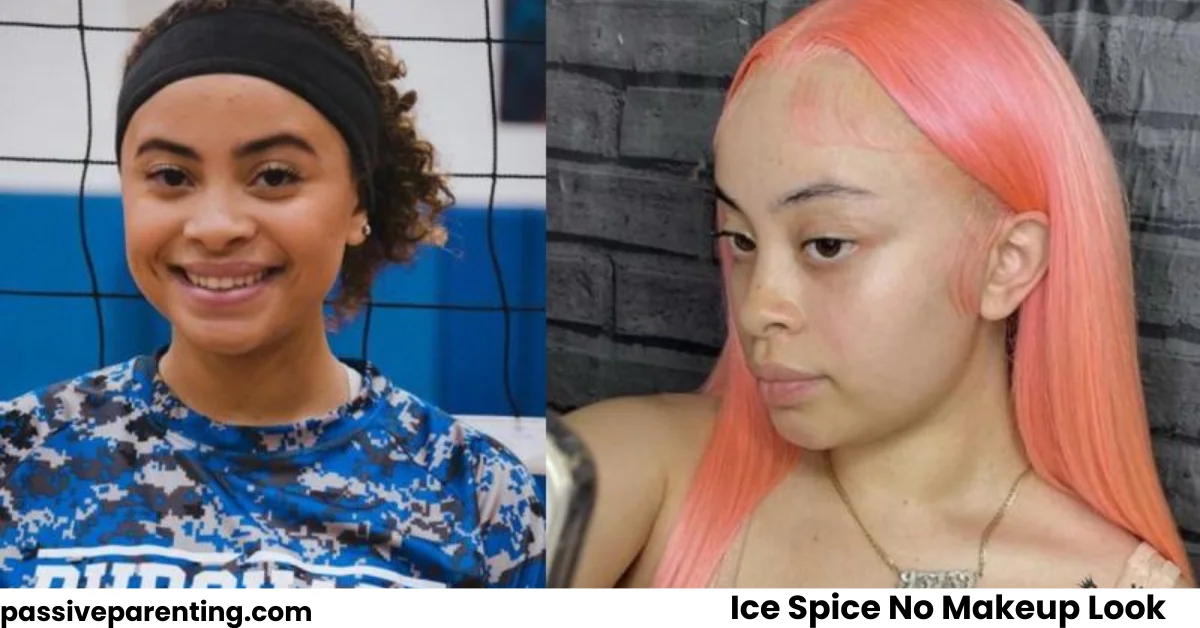When shopping for foundation, one question that often arises is: “Is Haus Labs foundation water based?” For makeup lovers, knowing the base (water, silicone, oil) helps you pair products smartly, predict wear, and avoid pilling or skin irritation. In this in-depth article, we’ll confirm whether the Haus Labs Triclone Skin Tech foundation is water-based, break down its formula, explore pros and cons, and give tips for optimal use.
The Short Answer: Yes, But With Silicones
Haus Labs’s flagship Triclone Skin Tech Medium Coverage Foundation is indeed water-based, meaning its primary solvent (the first ingredient) is water (aqua).
However, that doesn’t mean it’s purely water, the formula also contains silicones, emollients, and skin-friendly botanicals. The presence of silicones after water is common and helps texture, spreadability, and finish.
Let’s unpack what this means in detail.
Ingredient Breakdown: What’s Inside the Formula
To assess whether a foundation is truly “water-based,” we look at the ingredient list order and the types of compounds used. Here’s how Haus Labs stacks up.
Key Ingredients at a Glance
According to INCI Decoder, the top ingredients in Haus Labs Triclone Skin Tech foundation include:
- Aqua (Water, Eau) — first ingredient, the main base.
- Diphenylsiloxy Phenyl Trimethicone, Phenyl Trimethicone, Caprylyl Methicone, Trimethylsiloxysilicate — several silicone derivatives directly after water.
- Glycerin and Butylene Glycol — humectants that draw moisture.
- Isododecane — lightweight emollient/volatile fluid.
- Botanical extracts, peptides, fermented complexes — for skincare and calming effects, e.g. Arnica extract, tomato extract, Centella, licorice, etc.
Why It’s Water-Based
Because water (aqua) appears first, it is the primary solvent and basis for the formula. Other ingredients are dispersed within that water medium. This classification makes the foundation a water-based product, even though it includes silicones and oils to adjust texture and performance.
This combination is common in modern formulations: water gives fluidity and hydration, while silicones help smoothing, slip, and spread.
The Role of Silicones
Silicones like trimethicones and siloxanes help with:
- Smoothing and neutralizing texture
- Creating a light, silky feel
- Helping pigment dispersion
- Controlling shine and helping adhesion
They do not disqualify a formula from being water-based unless they are the dominant phase (i.e. listed first or second above water), which is not the case here.
Performance & Finish: What the Formula Delivers
Understanding the formula is one thing; how it behaves on skin is another. Here’s what users and reviews say about the performance of Haus Labs foundation.
Texture & Feel
- It applies like a serum-weight foundation, light and breathable, with a natural, skin-like finish (neither super matte nor dewy).
- Many describe it as “virtually weightless” and comfortable for all-day wear.
Coverage & Buildability
- The formula offers medium, buildable coverage. Starting light, you can layer for more opacity where needed.
- It’s good for blurring minor texture and evening skin tone without heavy masking.
Longevity & Wear
- Reviews report decent wear throughout a typical day, though oily skin types might experience some shine in the T-zone after several hours.
- It holds up well with minimal caking or settling, provided skin is primed and prepped.
Skin Types & Reactions
- Many users with dry or normal skin report it works beautifully without emphasizing dry patches.
- Some users with combination or oilier skin may notice shine or slippage over time.
- There are a few complaints of congestion or breakouts, possibly due to individual skin sensitivities or certain oils/extracts in the formula.
Pros & Cons of a Water-Based Foundation with Silicones
Here’s a balanced look at the advantages and drawbacks of a formula like this:
Advantages
| Benefit | Explanation |
|---|---|
| Light & breathable | Water-based gives a fluid, lightweight feel that doesn’t suffocate the skin |
| Ease of blending | Silicones help the product glide smoothly across skin |
| Natural finish | Not overly matte or dewy, sits in the middle |
| Compatible with many skin types | Especially good for dry and normal skin |
| Skincare + makeup | The foundation is infused with botanicals and beneficial extracts |
Potential Limitations
| Drawback | Explanation |
|---|---|
| Shine for oily skin | May not stay fully matte all day on oily zones |
| Primer compatibility | Silicone-based primers may cause pilling if used on top incorrectly |
| Potential sensitivity | Some extracts or oils may irritate sensitive or acne-prone skin in rare cases |
| Less extreme covering | For heavy coverage needs, may be too sheer unless built up |
How to Use Haus Labs Foundation Best
To make the most of this water-based yet silicone-balanced formula, follow these tips:
- Prep your skin well
Use a lightweight water-based moisturizer and let it absorb before applying foundation. - Choose the right primer
- Use water-based or compatible primers to avoid product separation or pilling.
- Avoid heavy silicones on top unless carefully matched.
- Apply in thin layers
Start with one light layer and build where needed, this preserves the breathable feel. - Blend with a damp sponge or brush
A damp beauty blender can help the foundation adhere well and give an even finish. - Set only as needed
Use light translucent powder in oily zones only; avoid over-powdering. - Touch up selectively
Rather than reapplying everywhere, dab in oil-prone areas if shine emerges during the day.
How to Tell if a Foundation Is Water-Based
If you encounter another foundation and wonder about its base, here’s what to look for:
- First ingredient “Water” or “Aqua” → indicates a water-based formula.
- Silicones (like dimethicone, trimethicone) can be present but listed after the water, meaning they’re secondary.
- Oil-based formulations often list oils (e.g. “Caprylic/Capric Triglyceride”) first or immediately after water.
- The feel: water-based often feels more fluid and breathable; heavier or creamier feel might suggest oil-base.
Comparisons: Water-Based vs. Other Base Types
| Feature | Water-Based Foundation | Silicone-Based Foundation | Oil-Based/Hybrid Foundation |
|---|---|---|---|
| Texture | Light, fluid, breathable | Smooth, silky, somewhat viscous | Creamy, denser |
| Finish | Natural, skin-like | Blur, soft-focus, can go mattifying | Dewy, richer glow |
| Ideal skin types | Dry, normal, combination | Oily, textured skin | Very dry, mature skin |
| Primer compatibility | Needs compatible primers | Often pairs with silicone primers | Best with non-conflicting primers |
| Layering & blending | Easy and forgiving | Very smooth blending | May feel heavier |
Final Thoughts
Yes, Haus Labs Triclone Skin Tech foundation is fundamentally water-based, with water listed as the first ingredient. At the same time, it integrates silicones and emollients to boost texture, slip, and finish. This kind of hybrid formula combines the best of smooth application (thanks to silicones) and a breathable base (thanks to water).
If your skin is dry or normal, it’s likely to perform beautifully for you. For combination or oily types, proper priming and minimal powdering will help manage any shine.


